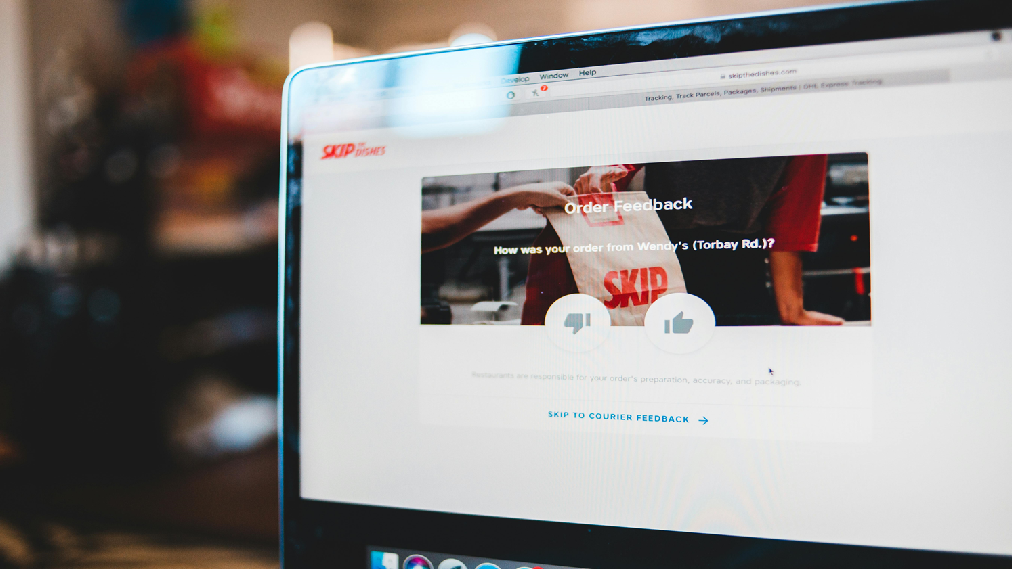Consent Forms: A Complete Guide
Some industries, including healthcare, banking, law, and technology, need consent forms. Business owners and managers must choose and apply the appropriate type of permission form. Otherwise, it may fail to fulfill its original legal function.

It is important to provide all the details to the client before signing any document.
We've described all you need to know about consent forms below, along with helpful hints and advice along the way.
What are Consent Forms?
A consent form is a signed document that details an individual's informed permission for medical research, clinical trial, or business activity. Consent forms, also known as release forms, are legal documents that provide written authorization for involved parties to share or receive information. They frequently notify consumers of the hazards of related use and free the provider from any connected claims. A consent form serves as an authorization and waiver when signed.

Make sure to take consent of your client or consumer before going ahead with any kind of further process.
A consent form's objective is to notify clients, patients, or subjects about the information you're acquiring, the rights they're surrendering, and other relevant details. They guarantee that communication channels between parties stay open and that people have the right to be informed.
Different Types of Consent
Consent can take many forms. Several aspects, like the relevant industry, media, legal circumstances, and others, influence the form of consent you'll utilize. You should consider the many types of permission available to you before making a decision. We've detailed the six most prevalent sorts of permission that you should be aware of below:
A) Explicit Consent

When you provide consumers the option to accept usage, risk, or disclosure, you are obtaining explicit permission. When a company handles a consumer's data, for example, worldwide privacy standards need specific agreement. These rules compel companies to make explicit and written disclosures about their activities and how customers may opt-out.
B) Active Consent

Similar to explicit consent, active consent occurs when consumers "actively" agree to a particular assertion. Active consent is demonstrated by clicking "I agree" on a webpage or signing a contract.
C) Informed Consent

When you obtain informed consent, you tell the subject of all the outcomes and repercussions of providing their permission. In order for informed consent to be valid, the signatory must:
I) Be competent
II) Authorize freely
III) Be well educated about the usage and hazards.
IV) Should be of at least age 18
D) Passive Consent

Passive consent is a sort of implicit consent in which the customer grants their permission without being asked. If you're attempting to meet privacy regulations, you can't employ passive consent. However, you might utilize passive consent terms if the use doesn't materially influence the consumer.
E) Implied Consent
In certain circumstances, involvement automatically provides approval, which is known as implied consent. Most states, for example, implement an implied consent rule upon acquiring a driver's license. In this case, implied consent means that you agree to furnish a breath sample to authorities for legitimate DWI/DUI investigations.
F) Opt-Out Consent

Opt-out consent is when customers can refuse or retract authorization at any moment. You can, for example, include an opt-out consent form so that customers can reject cookies on your website. Consent is formalized when the customer continues to utilize it without declining it.
Best Practices for Building a Consent Form
Here are some considerations to make while constructing your consent form.
A) Automate Responses
Some fields in a form, such as the date and time the form is signed, can be filled in automatically to save the user time. If the individual already has an account on your website, information such as name and address can be auto-populated in the form.
B) Create a user-friendly layout
Paper forms are often tedious and limited to a set number of pages. Because digital forms do not have the same constraints, you may develop a more user-friendly experience. You may, for example, make the form more navigable by dividing the information into sections or various pages.
C) Keep it short
The best way to proceed is to keep it short and sweet. Of course, you must include all relevant information and queries, but just keep what you truly require. Don't include more questions merely for the sake of having them. Make certain that each inquiry has a purpose.
D) Use Conditional Logic
Based on prior replies, your form may conceal or reveal questions. For example, if the individual filling out the form says yes to the question about whether or not they have children, the form may next inquire about the ages of the children. If the response to the question about having children was no, the form would skip the question concerning the children's ages.
E) Use contextual support (help text)
Including assistance language within the form, can help the user navigate through the questions. You don't have enough room to expound on difficult topics in paper form. You may incorporate explanations and guidance in digital format by hovering over or tapping on a certain text.
Elements to be included in a Consent Form
It may be tempting to leave out certain information on your consent form in order to keep it simple or save space. However, the form must have all the information you want from the individual filling it out, as well as all the elements you require from them.
For example, if applicable, you should gather general information, such as the person's name, postal address, email address, date of birth, and medical history. Make sure to provide a spot for a signature as well. You must also supply the user with specific information. When applicable to your firm, a consent form should have the following six elements:
A) Legality
Review your consent documents with a legal professional. They will be able to advise you if the document contradicts public policy or contract law in any way.
B) Paper Formatting
Headers, legible fonts, and plain text should be used in your permission form. Make sure it's appropriate for a broad readership.
C) Precision
To comply with the law, if you ask someone to renounce their rights, you must produce a detailed list of what they are waiving. Otherwise, you risk infringing on their rights or failing to provide adequate information in your permission forms.
D) Release Cause
Your permission form should include a release clause that the buyer agrees to. They absolve you of the dangers connected with using your goods or services.
E) Limitation of liability clause
The waiver of liability should say unequivocally that clients will not sue you for provider carelessness. To obtain enforceability, ensure that your disclaimers incorporate legal liability protection.
F) Signature and date lines
When necessary, the final component of a consent form is active consent. Active permission might take the form of a signature and dateline, or it can be as simple as an "I Accept" button. If you're utilizing implied consent, you may skip this step."
Use Cases of Consent Forms
A consent document is required in many legal scenarios. It's difficult to grasp how they function in the abstract, especially if you're writing one for the first time. We've included three samples of consent forms in a hypothetical case in this section:
Use Case 1: Website Cookies

The following is an example of an online business that sells to customers in areas where consumer privacy regulations apply:
A) Fashion world is an online clothes retailer for ladies.
B) They sell and send to consumers all around the world.
C) To function effectively, a portion of their website relies on cookies.
D) On their website, Fashion world has an active cookies consent form.
E) They also adhere to opt-out consent processes.
F) Certain website elements will not operate or be available if consumers do not agree to the conditions.
Use Case 2: DUI Testing

The following example demonstrates how governments use permission forms:
A) Diana now resides in the State of California.
B) She recently relocated and wishes to obtain a driver's license.
C) Under implied consent statutes, the state of California will grant her a driver's license.
D) Diana agrees to acceptable DUI screening by accepting and driving on public roads.
E) If she refuses to produce a breath sample during a subsequent DUI check, she will automatically lose her driver's license for a certain length of time.
Use Case 3: Personal Health Information

The following is an example of a healthcare technology company:
A) Heart Beat Rx provides an app that monitors a patient's heart rate, organizes online prescriptions, makes individualized suggestions to clients, and sends data to doctors.
B) Heart Beat Rx acquires new clients using a form on the app's splash screen.
C) Before utilizing the service, customers must provide their express and active permission.
D) In their customer onboarding procedure, Heart Beat Rx includes a permission form.
E) If the consumer does not provide consent, they will be unable to utilize any or all of the application's functionalities.
Who Uses Consent Forms?
Consent forms are used by businesses. They utilize them to provide approval for a certain action. At various times, particular industries, such as healthcare, technology, and finance, need organizations to gather consent using consent forms. Hire contract attorneys if you need to establish a consent form for your firm. They are well-versed in the law and can apply it to your specific circumstances. From the first draft to the contract signing, a legal specialist guarantees that you have the right to consent form.
Online Forms Vs Paper Forms in Consent Form
Consider how many paper consent forms you send home each year. And how many (or how few) returns were correctly completed, signed, and returned in time for the relevant activity? Digitizing consent forms is an excellent approach to decrease the time and effort necessary for distribution, quickly track status, and enhance form completion.

Paper Forms: Stack of papers in the office
Paper forms were the cutting edge of office productivity two centuries ago. It may be difficult to imagine, so let us paint a picture. There were few choices back then if you needed a duplicate of a document. You might have a printer set type and print copies for you. You might even have a clerk handwrite the text.
Paper forms increased efficiency by providing printed instructions as well as room for users to fill out their information. It was a significant improvement over creating a business letter from scratch each time you had an order or request. Today, we have a new chance since digital forms have emerged.
If you're used to utilizing paper forms, you might be wondering why you should switch to mobile data gathering with digital forms. Let's look at the benefits and drawbacks of utilizing paper forms at work.
Pros of Using Paper Forms
A) No electricity is required. Paper forms do not necessitate the use of a battery or an Internet connection. You're in business if you have a level surface, a pen, and enough light to see!
B) It is simple to transmit. What if you need to leave early from work? With a paper form, you may offer it to a coworker and ask them to fill it out.
C) Low price. Photocopiers and printers have reduced the cost of making copies.
Cons of Using Paper Forms

Paper forms aren’t as simple and seamless as digital forms
A) Transmission is slow. When a paper form is completed, it must be returned to the headquarters. Depending on your location, this might take hours or days. These kinds of delays make managing your business more challenging.
B) It's difficult to read. Have you ever read hurriedly drafted paperwork? The details are difficult to discern. If you have to take your employees out of the field to clarify what they put on their paperwork, it costs your company money.
C) The expense of protecting and storing paper. According to a Deloitte analysis, there are three main long-term expenses associated with paper records: storage, retention, and retrieval and disposal.
D) There is no analytics. There is no simple method to examine data in paper form without re-entering it into a spreadsheet or a different system. How can you make good management decisions without trend data?
E) The expense of processing. If approvals are necessary, a single paper form may need to be examined by various departments. Transporting the paper form from one department to the next slows down the entire procedure.
F) Issues with security. Paper forms, unlike digital information, cannot be encrypted. That implies a misplaced paper form may be easily read! Accepting this risk should be done with caution since fraud has evolved into a multibillion-dollar business.
G) It is difficult to convert form data to a computer. It is tough to analyze. It is tough to convert information from a paper form into a computer when your organization gets it. Even with scanners, you must review each form to ensure that the information is clear.
There was a lot of buzz about the paperless office in the 1990s. At the time, certain crucial technologies, such as dependable mobile devices, were lacking. It is now possible to run a paperless office.
Pros of Online Forms

Online forms can assist you in transitioning to a paperless office. In addition to saving money on paper and printing, digital or mobile forms have the following advantages:
A) Avoid paying paper storage fees. If your organization spends money each year to keep legal documents elsewhere, it's time to cut that cost. When compared to a traditional records management service, digital storage is less costly.
B) Maintain Your Workflows. There's no need to overhaul your whole work routine. Digital forms are designed to fit within your workflow (e.g. requestor, approver, analysis).
C) Connect to Your Other Software. Do you make use of Dropbox? That is only one of the internet services that may be linked to your mobile phone.
D) Mobile Device Support. Choose a mobile forms solution that is compatible with both Android and iPhone.
Tool to start using Consent Forms digitally
Since the great majority of individuals have access to a smart device and a data plan, online platforms may help with cohort studies and recruiting all over the world. In the United Kingdom alone, 84% of all homes have access to mobile devices and the Internet. Streamlined data collecting, data quality, and online monitoring all benefit technologies. It is worth noting that push notifications, which are quite useful in mHealth apps, can aid in the completion of web-based questionnaires and patient engagement.
Surprisingly, electronic signatures are not always necessary. Personal information, like today's secure financial transactions, can be sufficient to allow access to and follow-up on health-related data. Tools that can help build these consent forms digitally are online form builders. One such online form builder is LeadGen App. Let's have a quick look at the 3 easy steps to build consent forms digitally.
Step 1: You can build your form from scratch as per your choice, or you can simply choose from our 400+ template category of your choice.

Step 2: You can edit the form as per your choice of color, make it a multi-step or single-step form, and have different types of question types.

Step 3: Once your form is built & designed, easily embed it into your landing page with a simple embed code.

And Voila! Your form is ready!!
Conclusion
Depending on the circumstances, consent forms might be elaborate or simple. They do, however, usually include some type of acceptance, authorization, and release of claims. Because you often ask clients to waive their rights in certain instances, it's critical to contact an attorney finder who will assist you in hiring the right lawyer to ensure that their civil rights are protected.
A consent document does not absolve you of severe negligence. There are still requirements and goals to meet. Consent papers only protect you from realistic risks; otherwise, your liability insurance provider may refuse to cover you.






